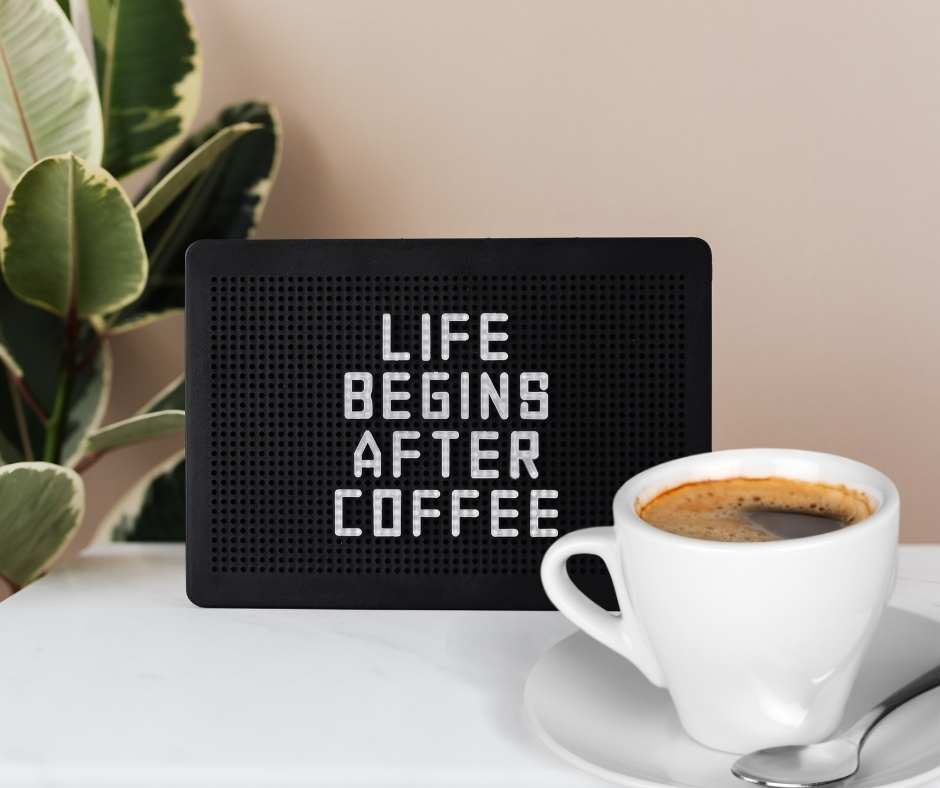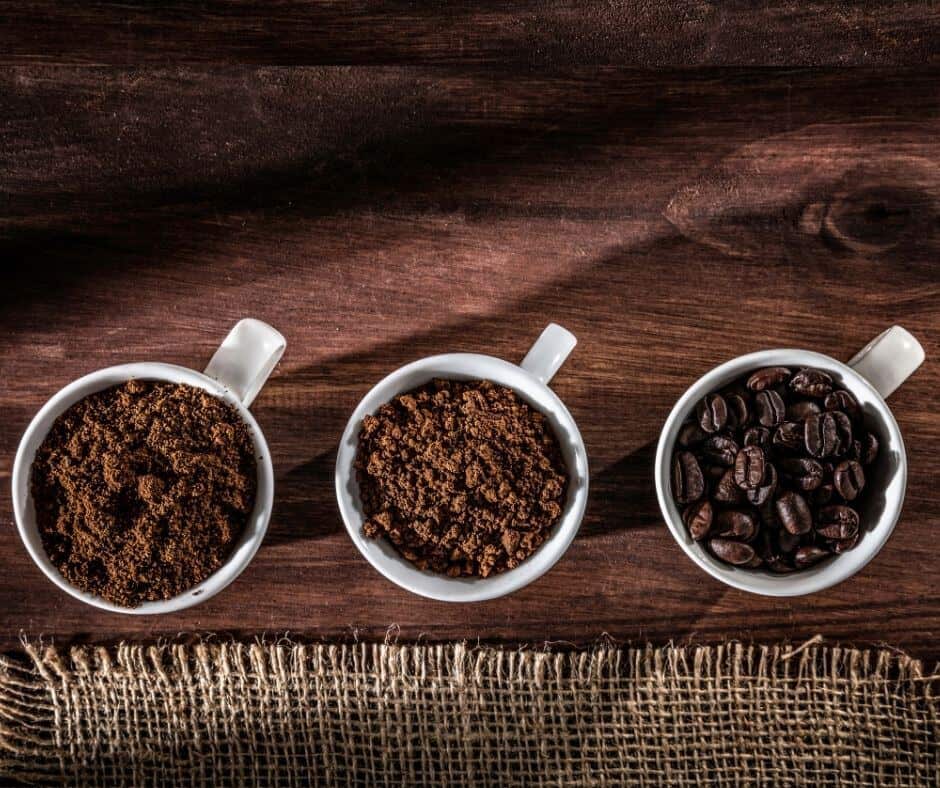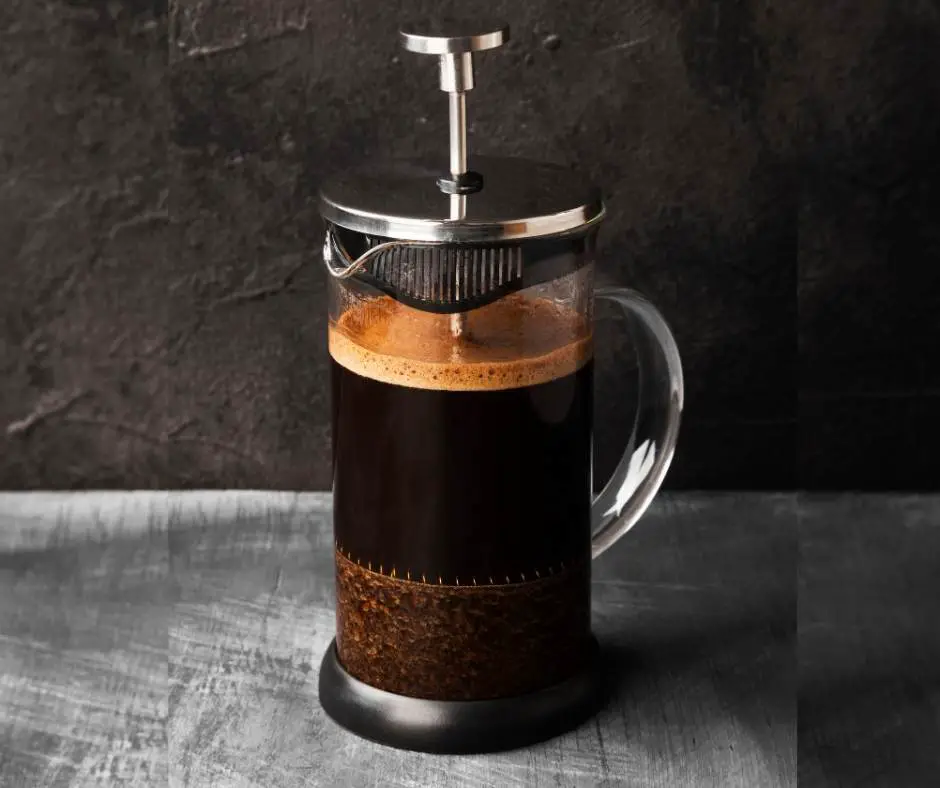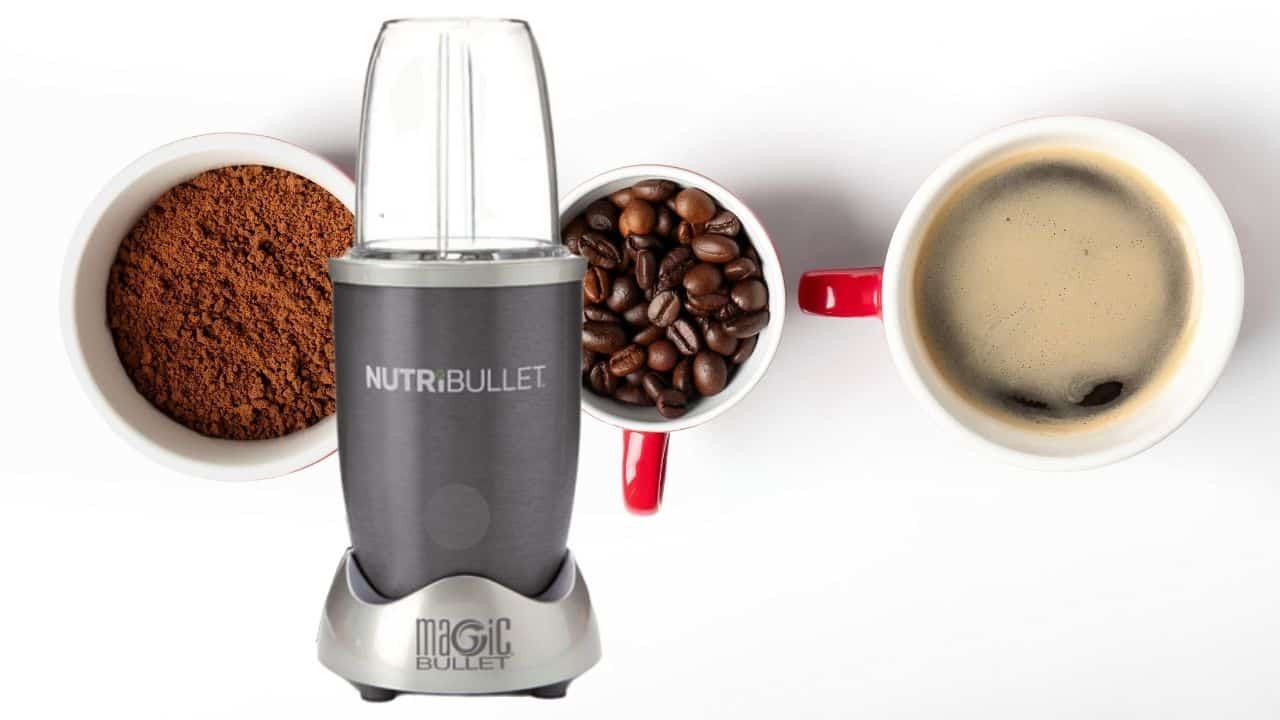I have always ground my own whole-bean coffee in the morning to ensure freshness and protect the coffee’s natural flavors from becoming stale and bland. But what if your grinder just jumps off the kitchen counter and takes its own life? A true story, that is what happened to me.

Grinding Coffee Without A Grinder
So, I didn’t have a grinder, at least the one that was working. How was I supposed to grind coffee beans in the morning for that all-essential cup to start my day? I have to admit, without my morning coffee, I can’t maintain my sunny personality.

What does a person – a person with a job and other responsibilities, but also a coffee addiction that makes all that stuff possible – do when their trusty coffee grinder abandons them?
a) Grab a heavy mallet and do it manually?
b) Wait 20 minutes in line at Starbucks, be $4 lighter, and be late for work?
There was a better option, sitting right in my kitchen cupboard.
Enter the NutriBullet!
Difference Between Coffee Grinder And Blender
At the time of purchase, the NutriBullet filled the blender-shaped hole in my life, enabling me to make a variety of refreshing smoothies and shakes during the hot summer months. For those jobs, a NutriBullet is ideal. I mean, that is what it’s meant for.
The question is: how would it fare as a stand-in coffee bean grinder?
Popular 600-watt NutryBullet like many standard home blenders can be a great alternative to a coffee grinder. Although blenders are primarily designed to blend soft and watery ingredients, their sharp blades could crush and pulverize the coffee beans just like a conventional coffee grinder.
Some blenders do even come with a separate milling blade or settings meant specifically for blending dry ingredients into powders.
But could it produce ground coffee on par with the blade or even a burr grinder? I had my doubts. I didn’t just want any old grind; I wanted something that produced a drinkable brew. Since I’m all about experimenting and getting my morning coffee at any cost (excluding money), I decided to throw caution to the wind and give it a grind.
Grinding Coffee Beans With A NutriBullet – How It’s Done
In this video below, you can see my (rather successful) attempt at grinding coffee using my Series 600 NutriBullet Magic Bullet.
- Fix the milling blade to the device, as per the instructions.
- Ensure the inside of the chamber is dry. And clean. Unless you want your coffee to have hints of peanut butter and strawberry (trust me, you don’t).
- Fill the chamber with the required amount of coffee beans and attach it to the base unit. (For the best result, don’t fill it all the way; leave some space).
- Push down on the chamber to start grinding. Stop to check grind consistency. Repeat until satisfied with the degree of grind.
Best NutriBullet Blade To Grind Coffee
While the NutriBullet milling blade (also called a flat blade) is specifically designed for grinding seeds, nuts, grains, and coffee beans, the extractor blade and ice crusher blade will also yield an equally even result. All these blades will work fine, provided that your blender is 600 watts or above.
Coffee Bean Grind Times For A NutriBullet

Below are approximate times for achieving different grind sizes for different brewing processes using a 600-watt NutriBullet blender. These times could slightly vary when using a different blender, blade, or a different amount of beans.
- 3-5 seconds – Coarse to Medium-Coarse for the percolator, French press, cupping, and Chemex coffee makers.
- 6-8 seconds – Medium to Medium-Fine for drip machines, pour-over brewers, AeroPress, and Siphon Coffee.
- 15-20 seconds – Fine to Extra Fine for mocha pots, espresso makers, Turkish coffee, and also AeroPress.
The Verdict

I brew my morning coffee using a French Press, so I needed reasonably coarse ground.
Unfortunately, there is no way of specifying this on a NutriBullet, so in my case, I had to eyeball it.
(You can, however, use the ‘pulse’ function to make sure you don’t accidentally over-grind your beans.)
Once I was happy enough with the grind, I threw it in the French Press and brewed up a batch of happiness.
The end result? It tasted fine. Not as good as the blend produced by my old burr grinder, but good enough.
I appreciate a nice brew but I am by no means a snob. The coffee was flavourful, if not a little bitterer than I’m used to.
What Does This All Mean?

If you’re a coffee connoisseur, then you may well be horrified by the grind produced in the NutriBullet.
But for the rest of us, it is a perfectly functional way of grinding your beans. I will manage even when a finer grind is required. But since there’s no method of control for achieving coarser consistencies then the outcome can be touch-and-go.
Is it worth having both a coffee grinder and a NutriBullet?
That will depend.
If you’re not particular about your coffee, but require a blender for smoothies and shakes after your gym workout then a NutriBullet will serve all your needs.
Do you care about producing the finest cup of coffee possible but aren’t interested in that smoothie life? Then you’re better off forgetting the NutriBullet and putting the money towards a high-quality coffee grinder that will give you precise and consistent results every time.
Which Coffee Grinder To Get?
Like most kitchen appliances, there are coffee grinders at every price point.
Your cheapest and the most basic grinder will be the manual sort.
Manual Grinder
Manual grinders might require more work, but they aren’t necessarily worse than electric ones; many people actually swear by these primitive yet durable versions. Many newer ones like the one above even offer an adjustable grind selector.
Electric Blade Grinders
Higher up the grinder food chain, you have electric grinders. These are more convenient and less fiddly than manual ones.
The most common one is an electric blade or propeller grinder that uses sharp stainless-steel blades revolving at very high speed to chop up coffee beans into fine particles, kind of like a blender. So you never really know what size your coffee grounds are going to be.
What separates a quality electric grinder (like mine – RIP) from a cheaper blade grinder is that the former uses a burr grinding system instead of blades.
Burr Grinder
TAP ON IMAGE TO CHECK PRICE
Burr Grinders ensure the even consistency of coffee grounds, which is essential for brewing a great cup of Joe.
What’s more, they allow the user to specify the exact consistency of grind they require. This is another important feature for coffee aficionados, as different brewing methods require different consistencies of grind.(E.g. Espresso requires a finer grind, whereas French Press brew is better with coarser grounds).
Cheaper grinders and all-purpose blenders – like the NutriBullet – on the other hand, use a standard blade system. There is less subtlety involved here; the rotating blades are more concerned with dismantling contents as fast and violently as possible.
This works great for fruit and soft foods. But for coffee beans? The end result is likely to be a more uneven mix of ground coffee.
So, suppose you are really particular about your coffee, and you want a consistent and perfect brew every time. In that case, the burr grinder is undoubtedly the best option for you. Although it is most expensive, the burrs themselves are typically made of ceramic or stainless steel and will outlast regular metal blades by many years.
Read Also: How To Roast Coffee Beans In Air Fryer
In Conclusion
If you are a big coffee enthusiast and making a perfect cup is your mission then leave your NutriBullet or a blender for smoothies and shakes (or for an emergency grind if you must) and follow the professional roasters, baristas, and coffee shop and invest in a burr grinder, wheatear manual or an electric.
But all that said, even a bad cup of coffee is better than no coffee at all. Just brew it!
Read Also: What Is Mushroom Coffee – Why Is Everyone Talking About It?




